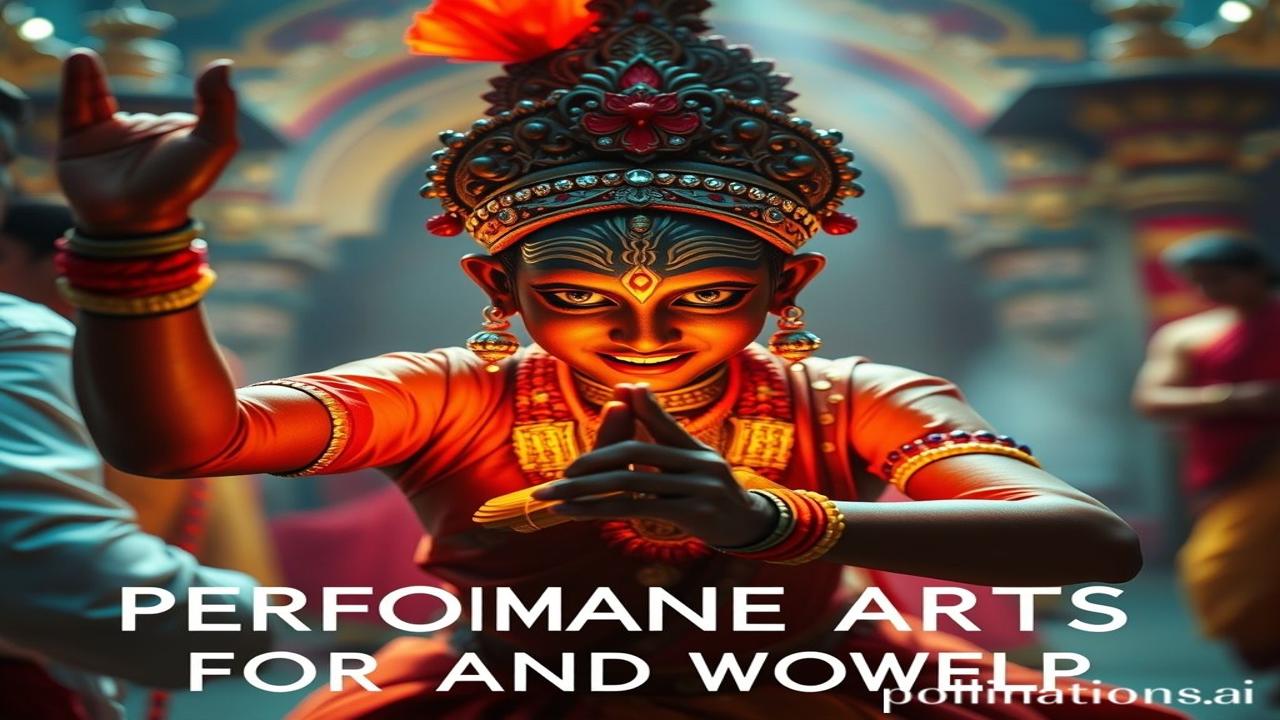Waqt Ke Rang, Ibadat Ke Sang: Unveiling India’s Performance Arts for Ritual and Worship
Kabhi socha hai, jab mandiron ki ghantiyan bajti thi aur hawa mein agarbatti ki khushboo failti thi, tab logon ke dil kaise dhadakte the? Waqt ki dhool mein, kuch aise hi rang chhup gaye hain, jo humein hamari Sanskriti ki gahrai tak le jaate hain. Aaj hum baat karenge un Performance Arts ki, jo kabhi sirf Manoranjan nahi, balki Ibadat ka ek zariya hua karte the. Let’s dive into the vibrant world of dance, drama, and music that once formed the very soul of ritual and worship in India.
Itihas Ki Jhanki: Where Art Met Faith
Performance arts for ritual and worship in India isn’t just about entertaining deities; it’s about connecting with them. This tradition stretches back to the very roots of Indian civilization, arguably even before the Indus Valley Civilization. We’re talking about a history spanning thousands of years! Think of the ancient Vedic chants, the rhythmic movements used during yagnas, or the earliest forms of dance-drama depicted in ancient sculptures.
- When & Where: From the pre-Vedic period to the present day, across the Indian subcontinent – from the temples of Tamil Nadu to the Himalayan monasteries.
- Why It Matters: These arts weren’t merely decorative; they were essential to the ritual experience. They served as a medium to invoke deities, tell their stories, and transport worshippers into a state of spiritual communion. Imagine the powerful energy generated when hundreds of people sang, danced, and acted together, all in the name of devotion!
Zameeni Sach: Jivan, Kala Aur Ibadat
Picture this: 5th century AD, during the Gupta era. Ma Yashoda, a Devadasi (a temple dancer), is preparing for her performance at the Vishnu temple in Ujjain. She carefully applies kajal to her eyes, the scent of jasmine oil filling the air. Her anklets chime softly as she practices her mudras – each gesture telling a story from the Puranas.
“Ma Rukmini ne aaj naye kapde pehne, kyunki mandir mein utsav tha…”, Yashoda whispers to herself, recalling the tale she will enact. The temple priest, meanwhile, is overseeing the musicians – the rhythmic beats of the mridangam and the melodious strains of the veena filling the sacred space. Farmers, artisans, and even the local ruler are present, their hearts filled with bhakti (devotion) as Yashoda’s dance begins. The performance isn’t just entertainment; it’s an offering, a prayer in motion.
Dharohar Aur Pehchan: Echoes of the Past Today
Even today, the echoes of this tradition resonate deeply within India. We see it in the Kathakali performances of Kerala, the Bharatnatyam recitals in Tamil Nadu, and the Chhau dance of Eastern India, all of which are rooted in religious narratives and performed during festivals and rituals.
Bharatiyata is incomplete without understanding the role of कला (Kala) in our culture. These performance arts, passed down through generations, are living embodiments of our cultural heritage and are intricately linked to our spiritual identity. They remind us that devotion can take many forms, and art is one of the most powerful. Look at the modern festivals, pandals, and even film/theaters these performance arts continue to inspire.
Mazedar Tathy Ya Bhram-Bhanjak: Did You Know?
Log samajhte hain ki classical dance forms sirf elite logon ke liye hain… lekin asli sach yeh hai ki these dances evolved from folk traditions and were performed by ordinary people for centuries before they became formalized. In fact, many Devadasis came from humble backgrounds, dedicating their lives to the service of the temple and the art form.
Drishya Aur Bhavnayein: Sense The Past
Imagine walking into a temple adorned with intricate carvings, the air thick with the aroma of incense and sandalwood. The sound of chanting fills the air, punctuated by the rhythmic clang of bells and the lilting notes of a flute. The temple walls feel cool to the touch, worn smooth by the hands of countless devotees. The colors are vibrant – the bright silks of the dancers, the gold ornamentation of the deities, and the deep red of the kumkum smeared on foreheads. This is India, a land where the senses are constantly awakened, where the sacred and the secular intertwine seamlessly.
Antim Vichar Ya Uddharan: Closing Note
Performance arts for ritual and worship is more than just a tradition; it’s a living embodiment of India’s soul. It’s a reminder that art and faith are not separate entities, but rather two sides of the same coin.
As the great Indian philosopher Abhinavagupta once said: “Shiva and Shakti are inseparable, just as consciousness and energy are inseparable.” Just as Shakti finds expression through art, so too does Shiva, the supreme consciousness, find expression through devotion.
To end with a simple line: “Kala mein ibadat hai, aur ibadat mein kala… yeh hai Bharat ki rooh.”
